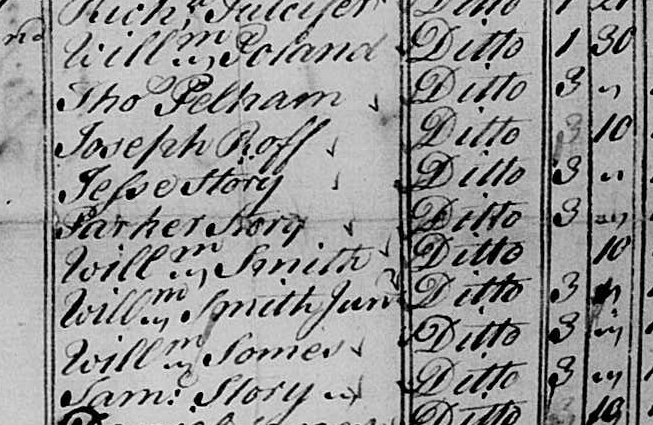Two adult William Smiths were living in Gloucester, Massachusetts, in 1775 and 1776. They were perhaps 12 years apart in age, and I have no evidence they were related. One of them—the older one—is my ancestor.
By 1775, the older colonial New England habit of distinguishing same-name men by “senior,” “junior,” “3rd,” etc., in order of their age, in public records was on its way to disappearing. These two Williams are never distinguished in any town or civil records I’ve found: marriages, births of children, deeds, etc.
But I can be relatively sure* that “my” William Smith served in the Revolution.
How? Because they both enlisted in the same militia company in Gloucester in February 1776. “William Smith” and “William Smith junior” appear side by side in two muster rolls in that year.


Distinguishing them this way in the muster and pay rolls was contextually important. The older William left the unit on June 10, 1776, serving only 10 days in that quarter. William “junior” stayed in for several more months, but in the rolls drawn up in subsequent quarters, the clerk did not bother to call him “junior.” It wasn’t contextually necessary.
If the two Williams had not served together in the same unit, I would never have known for sure who was who, and that “my” William served for those four months.
*”relatively sure”: This of course depends on the argument from silence, that a third adult William Smith did not sojourn in Gloucester in 1776, or that this company, mustered and stationed at Gloucester, and looking, from its roster, like it included all Gloucester men, had no interlopers from other towns at this time.
Images: Capt. Daniel Giddings’s Co., Col. Joseph Foster’s Regiment, Coastal Defense [Mass. Militia], muster / pay rolls: Mass. State Archives, Revolutionary War Muster Roll Records Coll. (77 vols.), 36:13 (Feb., April, May 1776) and 36:48 (June, July, Aug. 1776) [FS DGS 008092197, images 28 and 43].

Post a Comment